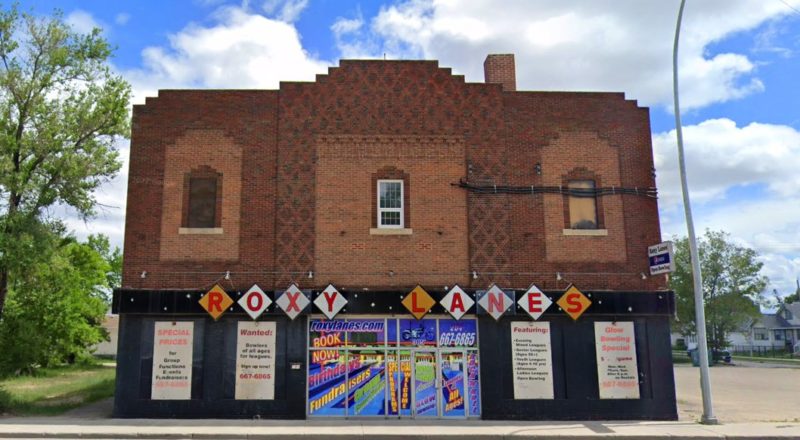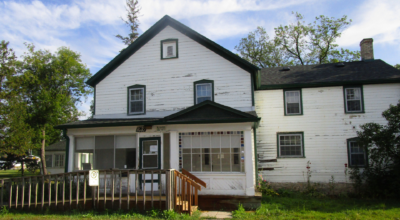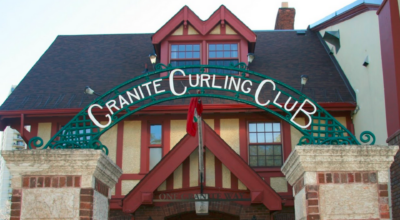
/ News
July 13, 2022
Roxy Lanes Denied Designation
The bid to have Roxy Lanes at 385 Henderson Highway nominated for a heritage designation has been officially quashed. Following the news that Roxy Lanes was likely to be demolished after being sold, the community, supported by Heritage Winnipeg and Elmwood-East Kildonan Councillor Jason Schreyer, advocated to have the building protected by adding it to the City of Winnipeg’s List of Historical Resources. The Director of Planning, Property & Development reviewed the content and subsequent requests from the East Kildonan-Transcona Community Committee meeting on April 25, 2022 and the Standing Policy Committee on Property and Development, Heritage and Downtown Development meeting on May 9, 2022 for the nomination of Roxy Lanes. In July 2022 the Director returned with his decision not to nominate Roxy Lanes because “[g]iven the very limited remaining character defining elements of this building (front brick façade), the acknowledgement of the past in built form should not impede or limit the current development proposal and pending investment.”
Roxy Lanes was sold to the Manitoba Métis Federation in April 2022, including its parking lot and the adjacent vacant property. The sale prompted outcry from the community, which feared the vibrant historic community hub would be demolished. Heritage Winnipeg supported the community, speaking in favour of nominating the building for a heritage designation at the Standing Policy Committee on Property and Development, Heritage and Downtown Development meeting on May 9, 2022. Saving heritage buildings and adaptively reusing them contributes to environmentally sustainable development while respecting the surrounding community. Roxy Lanes also represented an opportunity to protect built heritage in an area of the city where the only heritage designation to be found is the former Fire Hall No. 8 at 325 Talbot Avenue. Instead, the building will now be added to the City’s Commemorative List of Historical Resources, acknowledging the building’s importance but doing nothing to protect it.
The building we know today as Roxy Lanes opened as the Roxy Theatre on December 24th, 1929. Designed in the Mission-Revival style by Max Zen Blankstein, one of the first Jewish architects practicing in Canada, it cost $150,000 to construct and could seat around 1000 movie goers. The Roxy Theatre advertised itself as “Canada’s Finest Atmospheric Theatre”, featuring a blue ceiling with twinkling stars and projected clouds, with facades of Moorish style houses adorning the walls. It was designed to make patrons feel like they were outside, enjoying a beautiful evening in a quaint Spanish village. The theatre was used for fundraising events during the Second World War, later returning to showing films. In the 1950s, new modern movie theatres, coupled with the arrival of television in Winnipeg in May 1954, marked the end of the Roxy Theatre.
Instead of demolishing a still functional building, the Roxy Theatre was adaptively reused, converted into Roxy Lanes, opening with 20 bowling lanes in 1960. Parts of the Roxy’s former life as a theatre could still be found in the basement as of 2022, including the theatre doors, cash register, projector and village decor. This change of use is the same trajectory taken by the 1931 Uptown Theatre at 394 Academy Road, another atmospheric theatre designed by Blankstein. First adaptively reused as a bowling alley in 1960, it was adaptively reused a second time, opening as Uptown Lofts, an apartment building, in 2020. Unfortunately, the Manitoba Métis Federation does not have similar plans to adaptively reuse the Roxy Theatre a second time. They have instead presented plans to demolish the historic building and replace it with a six storey affordable housing complex for seniors. While affordable housing is much needed in Winnipeg, there is no reason it cannot go hand in hand with conserving built heritage. Heritage Winnipeg is hopeful that the new owners of Roxy Lanes will look to the Uptown Lofts for inspiration, conserving the building, its history and sense of place, all while providing new housing for the community in an environmentally responsible manner.












